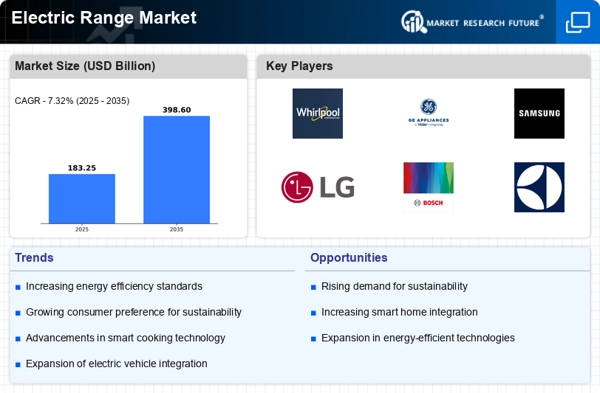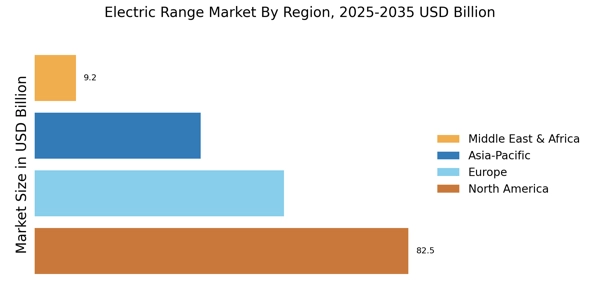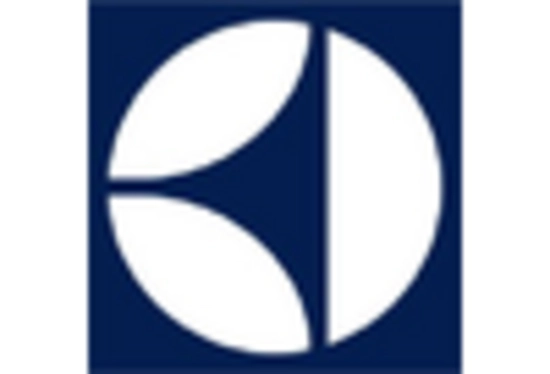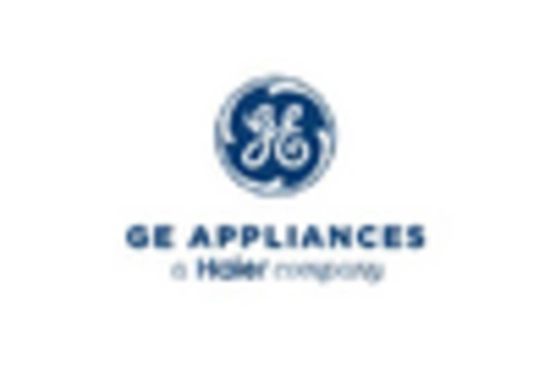Shift Towards Sustainable Living
The Electric Range Market is witnessing a paradigm shift towards sustainable living. As consumers increasingly prioritize sustainability in their purchasing decisions, electric ranges are becoming a preferred choice due to their lower environmental impact compared to gas ranges. This trend is further supported by the growing availability of renewable energy sources, which enhances the appeal of electric cooking appliances. Data indicates that households using electric ranges powered by renewable energy can significantly reduce their carbon emissions. This alignment with sustainable practices is likely to drive demand for electric ranges, as consumers seek to minimize their ecological footprint. Consequently, the Electric Range Market is poised for growth as sustainability becomes a central theme in consumer behavior.
Rising Demand for Energy Efficiency
The Electric Range Market is experiencing a notable increase in demand for energy-efficient appliances. Consumers are becoming increasingly aware of their energy consumption and its impact on the environment. This shift in consumer behavior is driving manufacturers to innovate and produce electric ranges that consume less energy while maintaining high performance. According to recent data, energy-efficient electric ranges can reduce energy consumption by up to 30% compared to traditional gas ranges. This trend not only appeals to environmentally conscious consumers but also aligns with government initiatives aimed at reducing carbon footprints. As a result, the Electric Range Market is likely to see sustained growth as more households prioritize energy efficiency in their purchasing decisions.
Government Incentives and Regulations
Government policies and incentives play a crucial role in shaping the Electric Range Market. Various countries are implementing regulations that promote the use of electric appliances over gas alternatives. These regulations often include tax credits, rebates, and other financial incentives for consumers who choose electric ranges. For instance, some regions offer rebates that can cover a significant portion of the purchase price, making electric ranges more accessible to a broader audience. Additionally, as governments set stricter emissions standards, the demand for electric ranges is expected to rise. This regulatory environment not only encourages consumers to switch to electric but also compels manufacturers to innovate, thereby driving growth in the Electric Range Market.
Technological Innovations in Cooking Technology
Technological advancements are significantly influencing the Electric Range Market. Innovations such as induction cooking, smart technology integration, and enhanced safety features are transforming the way consumers interact with their cooking appliances. Induction ranges, for example, offer faster cooking times and precise temperature control, appealing to both amateur cooks and culinary enthusiasts. Furthermore, the integration of smart technology allows users to control their electric ranges remotely, providing convenience and efficiency. As these technologies become more mainstream, they are likely to attract a wider consumer base, thereby propelling the Electric Range Market forward. The continuous evolution of cooking technology suggests that the market will remain dynamic and responsive to consumer needs.
Changing Consumer Preferences and Lifestyle Trends
Consumer preferences are evolving, and this is having a profound impact on the Electric Range Market. Modern lifestyles are increasingly characterized by convenience, efficiency, and aesthetics. Consumers are looking for appliances that not only perform well but also complement their home decor. Electric ranges are often designed with sleek, modern aesthetics that appeal to contemporary consumers. Additionally, the rise of cooking shows and social media has heightened interest in home cooking, leading to increased demand for high-quality electric ranges. Market data suggests that the demand for premium electric ranges is on the rise, as consumers are willing to invest in appliances that enhance their cooking experience. This shift in consumer preferences is likely to drive innovation and competition within the Electric Range Market.


















Leave a Comment